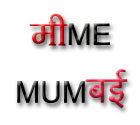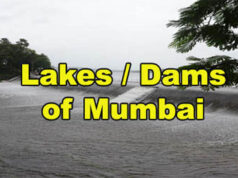By 2050, large portions of the city’s suburbs and South Mumbai may be underwater if emissions are not kept in check, said an international study by the American scientific research organisation, Climate Central.
The study was published in the journal of Nature Communications last year.
Stretches in central Mumbai, coastal areas along with Navi Mumbai and Thane, and all of Vasai-Virar and Mira Bhayander are at “critical risk” of coastal inundation by 2050, according to Climate Central’s study of the effects of sea-level rise globally. The report says previous estimates were more optimistic because they didn’t measure land elevations accurately.
Climate Central used artificial intelligence and satellite imagery to create revised projections for 2030, 2050, and 2100 under different emission scenarios (no emission cuts; medium emission cuts, and unchecked pollution levels).
Approximately 150 million people are living in areas that may be below the high-tide line by 2050, says the study. Many cities like Bangkok, Ho Chi Minh City and Alexandria may be lost to rising waters.
Dadar is said to be at critical risk, according to Climate Central’s study of the effects of sea-level rise globally.
In India, 36 million people would face annual flooding by 2050 and 44 million by 2100 if emissions continue to rise.
The Maharashtra government said the state’s climate change adaption policy addresses the issue of rising sea levels.
“The policy cleared by the state cabinet last year lists a number of measures to ensure Mumbai and other coastal cities are well protected,” said Anil Diggikar, principal secretary, State environment department.
Juhu is another vulnerable area, the study revealed. Climate Central used artificial intelligence and satellite imagery to create revised projections for 2030, 2050, and 2100 under different emission scenarios. (Hindustan Times)
The study found Mumbai’s green zones, which act as sponges and flood plains – such as the Sanjay Gandhi National Park, Aarey Milk Colony, Powai, Andheri (East), Borivli, Kandivli (East), Mulund (West), Thane (West), and Bhiwandi – are likely to survive the rise in sea level. Isolated parts of south Mumbai – including Malabar Hill, Fort, Nariman Point and GD Ambedkar Marg in Parel – and marginally-elevated zones in Bandra (West), Kalina and the Chembur-Trombay area are also not at risk.
Marine Drive may be submerged if emissions are not kept in check. According to the study, green zones such as the Sanjay Gandhi National Park, Aarey Colony in Goregaon, Powai, Andheri (East), Borivli, Kandivli (East), Mulund (West), Thane (West), and Bhiwandi, are likely to survive sea level rise. (HT)
“The findings of this study clearly indicate a ticking time bomb for a city like Mumbai,”
– ANJAL PRAKASH, ONE OF THE AUTHORS OF A REPORT BY THE UNITED NATIONS’ INTERGOVERNMENTAL PANEL ON CLIMATE CHANGE (IPCC).
Article source: Hindustan Times







